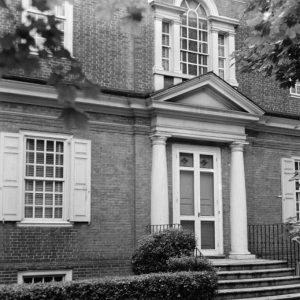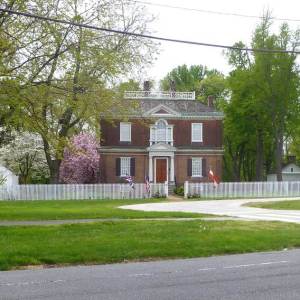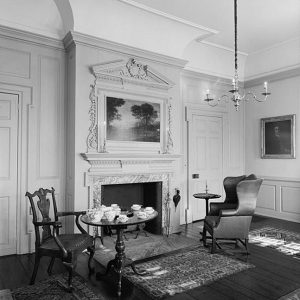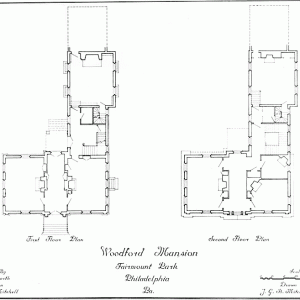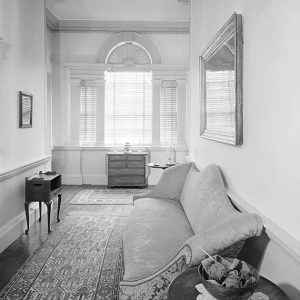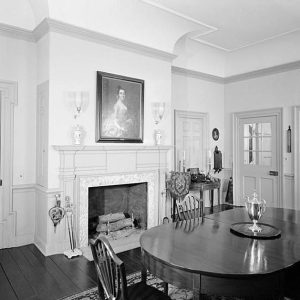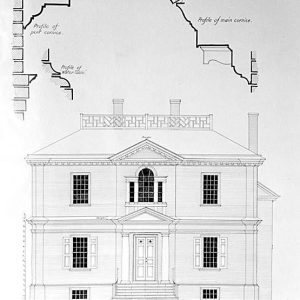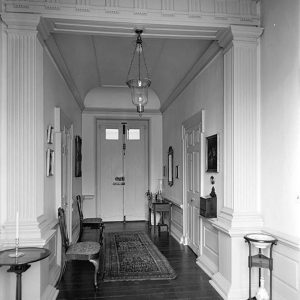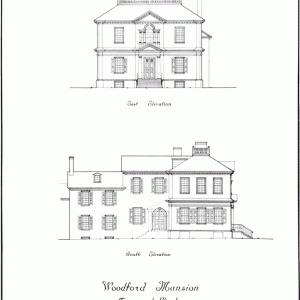Woodford Mansion 1758
Fairmount Park East, Philadelphia, PA
Judge William Coleman had a single-story house built in the Georgian style and completed in 1758. Coleman was a Quaker, born in Philadelphia and close friends with Benjamin Franklin. Woodford sits on the edge of East Fairmount Park, near Ridge Avenue and 33rd Street, and accessible in the park from Randolph Street.
The second floor, with a beautiful Palladian window, was added about 1772 by David Franks who lived there as an employee of the English Crown. After the British occupation of Philadelphia ended in 1777, the infamous Benedict Arnold was assigned to arrest him for treason. Franks and his family were forced to move with other Torys to New York.((HABS PA-1307 ))
Fairmount Park acquired the property in 1868 and the building was used over the next 60 years as park offices and traffic court. Woodford Mansion has been operated as a historic house museum since 1930 when Naomi Wood and Daniel Huntoon donated their collection of “Colonial household gear” and antique furniture for permanent display. The Naomi Wood Trust funded the original restoration and continuing maintenance of the mansion and the carriage house.((Woodford website ))
A Closer Look at the Schuylkill River Valley and the Rise of the "Villa"
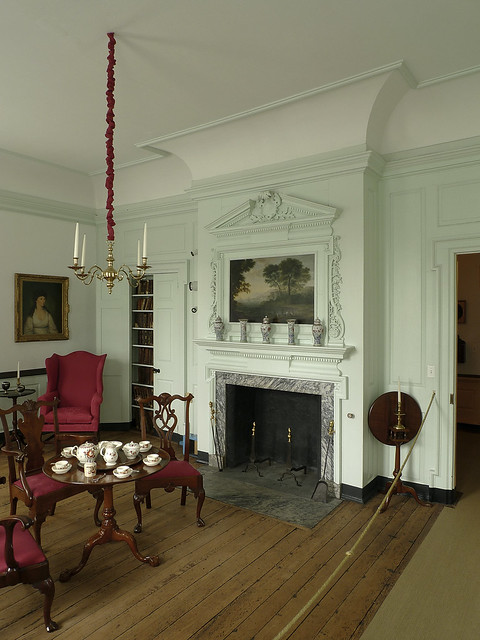
Federal style fireplace overmantel (photo: chrisstorb on Flickr)
Throughout much of her life, Rebecca Rawle documented the constant interaction of the villa-dwellers in her diary, clearly demonstrating that “country” living was exclusive not reclusive in nature. It was an opportunity to associate with one’s peers while displaying that badge of wealth, “social arrival” and cosmopolitan Anglophilia: the villa. ((“Schuylkill River Villas Fairmount Park, Philadelphia” HABS PA-6184 (1995):9 ))
Resources
Woodford Mansion National Historic Landmark – official website
33rd & Dauphin Streets
East Fairmount Park,
Philadelphia, PA 19132
(215) 229-6115
